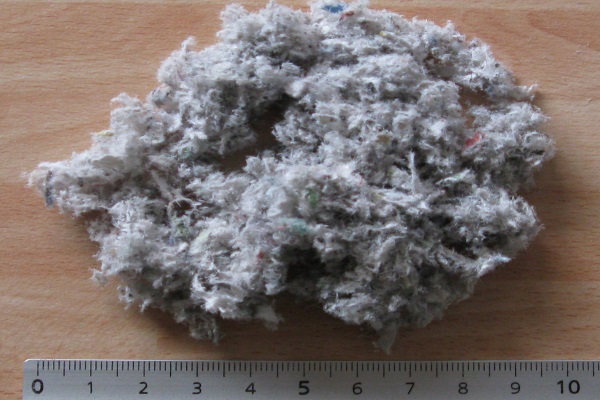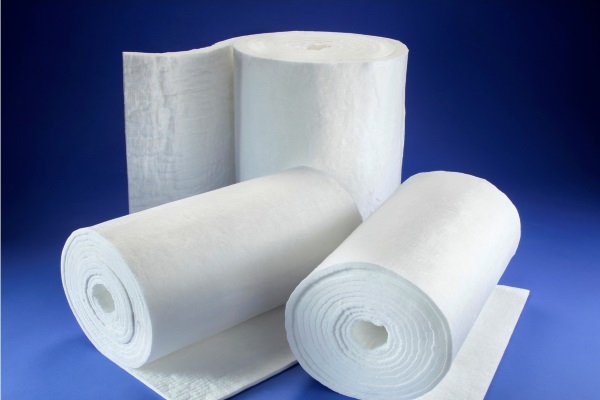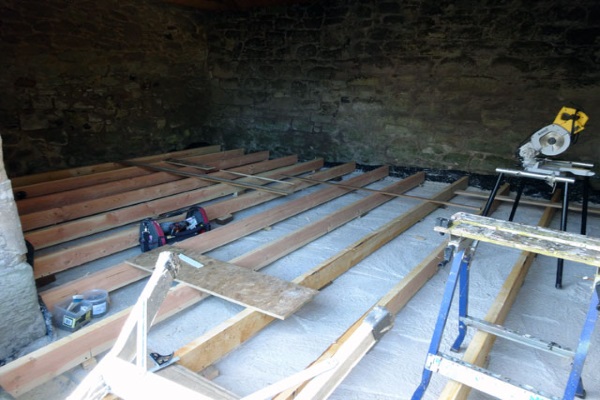When you bought and installed your roof, you chose it because of its durability, longevity, and insulating capability. However, even if your effective roofing material can reflect UV rays and heat away from the property, it will still need insulating reinforcement. That’s where roofing insulation types come in to help — especially when you encounter insulation-affecting roof damage.
For Allen TX homes, hot summers and cold winters require excellent insulation. After reading this post, homeowners will know more about:
- The different types of roofing insulation available
- How loose fills make great lightweight roof insulation
- How blankets and batts are effective but require additional structural support
- And how structural insulated panels and spray foams play great roles in improving overall property insulation
Loose Fills
Loose fill insulating materials use small fiber strands. Reputable roofing contractors will use special equipment to blow it into the spaces between the roofing material and the internal ceiling. Because they fill the smallest nooks and crannies, they prevent cold spots from occurring by absorbing the temperature.
These loose fills come in three roofing insulation types: fiber, cellulose, and fiberglass. Each one of these attic roofing insulation types deliver excellent reduction in outside temperature infiltration.
Cellulose
Cellulose are heavy variants of loose fill fibers. Manufacturers make them with recycled paper and fire-retardant material. The soft recycled paper absorbs the temperature from the small corners of the attic. In turn, this makes them excellent old roofing insulation types of materials because of their efficacy and cost-effectiveness.
However, old and new homes will need reinforced drywall and framing with a 16-inch space in between. Because it is recycled paper, it may reduce its performance after 10-15 years.

Loose-fill cellulose are small stands that occupy the smallest areas of your roof. However, they can be quite heavy.
Fiberglass
Fiberglass plays a huge role as roofing insulation types of materials that reinforce architectural shingles and sidings for residential properties. However, they also work as loose-fill fibers useful for insulating roofs and nooks that cause moisture and temperature leakage inside homes.
Unlike their blanket and batt variants, loose-fill fiberglass is lightweight. It will require attics to have drywall installation, but as rigid roofing insulation types, they will stay in place for a very long time.
Blankets and Batts
These common roofing insulation types play a huge role in both soundproofing and property insulation because of their thickness. In fact, contractors often recommend them as flat roofing insulation types of materials because they are easy to install within drywalls between roofs and walls.
Most people prefer to install blanket and batt insulation by themselves because it is easy to do so. Here are the most common blanket and batt house roof insulation types available.
Fiberglass-Reinforced Insulation
While expensive because of their fiberglass content, you can find them immediately in your local hardware stores. Most manufacturers cut them to standard widths that allow them to fit between studs, joists, and rafters. This eliminates the need to cut them to size and saves installation time.
However, installers have to be careful it does not compress under pressure especially when in transit to the home they will insulate. The material compresses easily and can lose its insulating capabilities afterwards.

Fiberglass batts are sold in pre-cut rolls that will fit any nook and cranny of your property.
Rockwool-Reinforced
Rockwool is material that is below the performance of fiberglass when it comes to impact reduction, but it is better than the latter when resisting fires. However, it is one of the roofing insulation types that is quite rare to find in usual Allen TX hardware stores.
While they effectively insulate homes and prevent fire from spreading towards other areas of the property, they can get damp. Unfortunately, the material is likely to spur the growth of mold in cold spots along the roof.
Cotton Fiber Batts
Cotton fiber blankets and batts are the most environmentally-friendly roofing insulation types available on the market. However, they’re also greatly expensive.
In addition, just like fiberglass, they have lower fire retarding capabilities than rockwool. However, they come in quick-unroll rolls and are easy to fit around pipes.
Their lifespan is parallel to fiberglass blankets and batts. Additionally, they will not compress easy and become habitats of molds over time.
Structural Insulated Panels
These roof insulation types work with roofs, ceilings, and floors. As prepared insulating materials, they have specific cuts made for any kind of space making them easy to install.
You can imagine structural insulated panels (SIPs) as drywalls with blankets and batts attached to the side that will occupy the cold spaces. For added insulation, some contractors add additional drywalls especially if the panel aesthetic is not too pleasing for homeowners.
Polystyrene Structural Insulated Panels
These come in two forms: expanded and extruded panels. Both are easy to find in Allen TX.
Expanded SIPs are inexpensive. However, they only offer sufficient insulation available. These polystyrene SIPs are moisture-penetrable, which can make them mold habitats.
On the other hand, extruded SIPs will block moisture and offer better insulating capabilities than expanded SIPs.
Both materials are lightweight and easy to install. However, you will still need an easy to cut or moldable material to fill gaps that air and small animals can penetrate.
Polyisocynaturate Structural Insulated Panels
Unlike polystyrene, these materials have the highest insulating capabilities than any other material on this list. Additionally, it is quite thick with a width of 1/2 to 2 inches.
Its outward layer of foil allows it to prevent moisture from penetrating the material. While effective, it is also quite expensive. However, you have insulation that can last for 15-30 years.
Spray Foam
These are the only materials in the list of best roof insulation types that will require professional contractors to install. They use special equipment to fill entire spaces with insulating polyurethane foam.
These materials come in two forms.
Open-Cell Polyurethane Spray Foam
These spray foams are made of plastic. Then, they will stop the movement of air in cold spaces by absorbing them. In turn, roof cavities and internal ceilings remain dry. Unfortunately, they will still require moisture barriers because they are water-impregnable.
Closed-Cell Polyurethane Spray Foam
These materials are quite expensive and do not come in cans. However, they can stop the movement of moisture and air. In turn, this makes them a one-stop spray foam solution for insulation.
However, because they require specialists for spraying the material and constructing additional roofing joists, you might consider it the most expensive but effective form of insulation available.

Some heavy insulating materials such as closed-cell polyurethane foam will require additional roofing joist construction for additional support.
Wrapping Up
When considering property insulation, you won’t always have to get the most expensive variant. In fact, always consider the existing UV ray and insulating capacities of your roof. If your roof provides effective insulation, then you might only need loose-fill or blanket and batt insulation.
With all things considered, make sure to only work with professional roofing contractors with insulation installation experience and equipment for optimum results.
If you’re in need of one, Storm Pros is the most reputable roofing contractor in Allen TX with decades of experience to work on any roof insulation you need.

Recent Comments